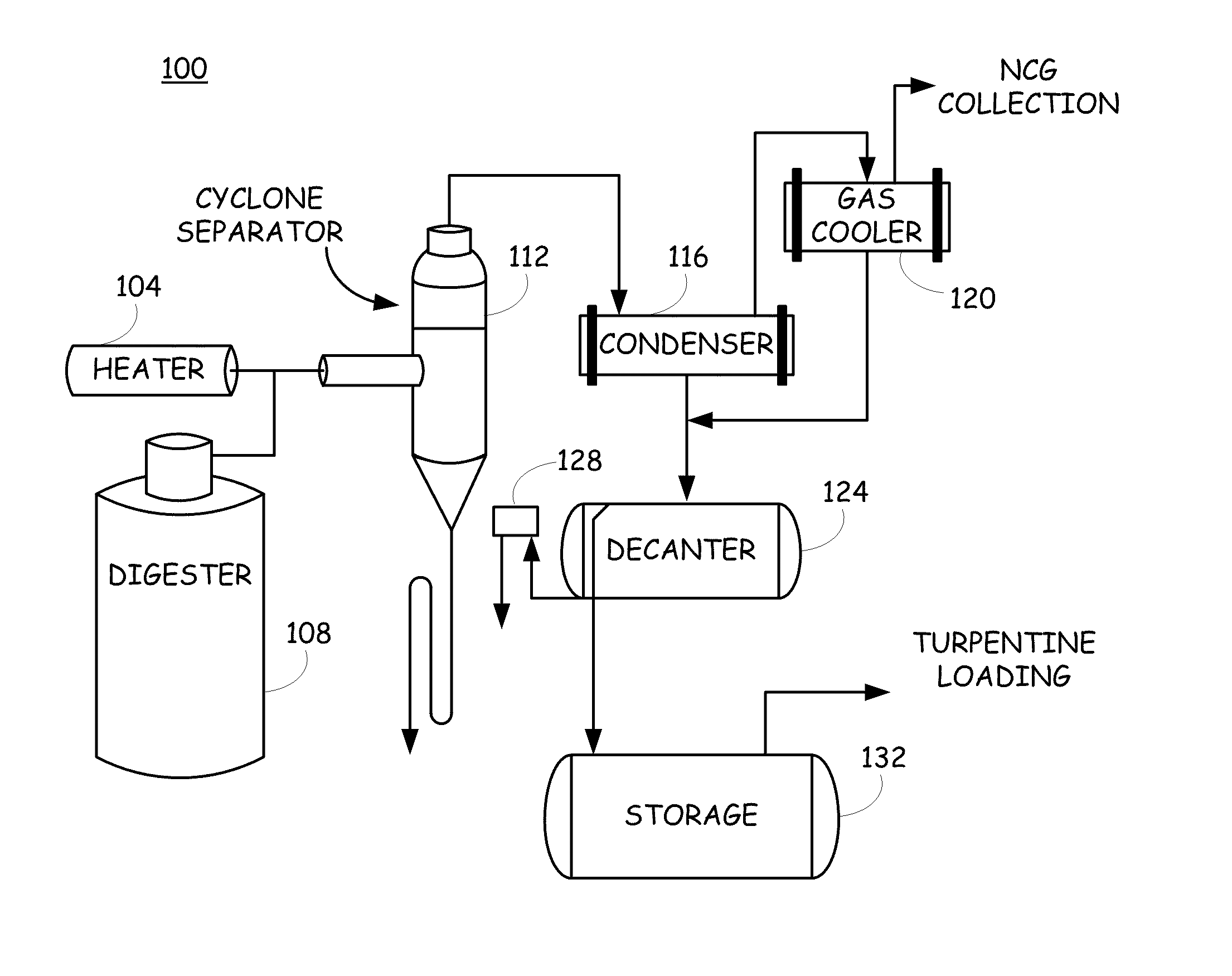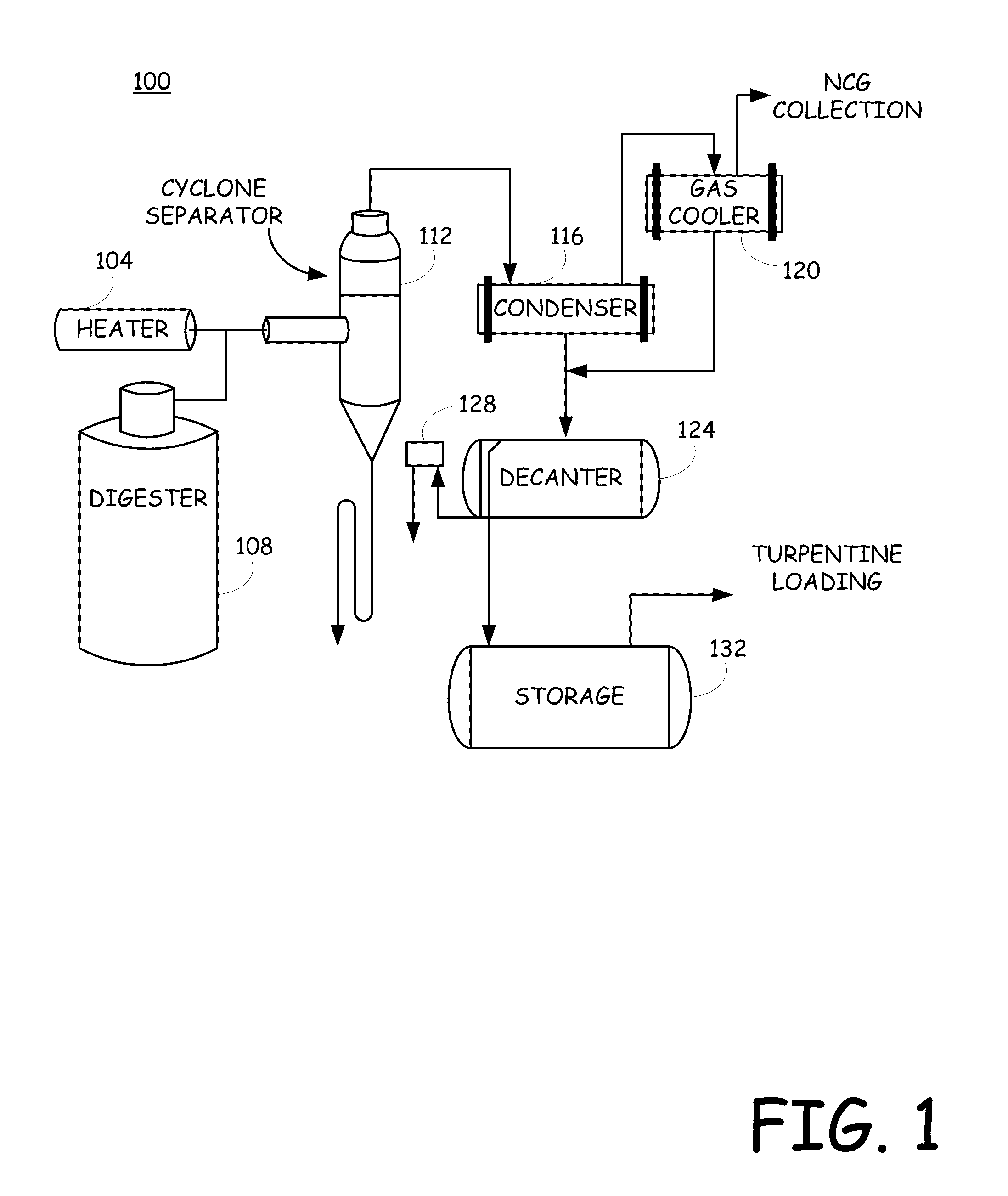System and method for recovering turpentine during wood material processing
a technology of wood material and recovery method, which is applied in the direction of drying machines, lighting and heating apparatus, furnaces, etc., can solve the problems of fine dust (particulate matter), pm2.5 emissions of older pellet stoves and boilers, and the industry wide standard has not been developed or accepted, so as to reduce the capital and operation costs
- Summary
- Abstract
- Description
- Claims
- Application Information
AI Technical Summary
Benefits of technology
Problems solved by technology
Method used
Image
Examples
Embodiment Construction
[0032]The present disclosure is focused on new and novel systems and methods for recovering of turpentine during the manufacturing of wood chips and wood pellets. In an exemplary embodiment, a volatile organic compounds recovery system is used to capture turpentine from the dryer exhaust as wood chips are being dried. Advantageously, application of the various techniques disclosed herein can result in the recovery of turpentine that can then be sold to generate revenue and, may contribute to a reduction in the capital and operation costs for emission controls for the dryer exhaust.
[0033]Turpentine can be removed from wood or recovered during processing of the wood in various stages. One such stage is available as wood is being harvested and then prepared for shipment, such as in making wood pulp, wood chips etc. For mill processing, the window of opportunity to extract or recover turpentine from wood opens at the time the tree is cut and terminates when the rail car or tank truck is...
PUM
| Property | Measurement | Unit |
|---|---|---|
| temperature | aaaaa | aaaaa |
| temperature | aaaaa | aaaaa |
| combustion efficiency | aaaaa | aaaaa |
Abstract
Description
Claims
Application Information
 Login to View More
Login to View More - R&D
- Intellectual Property
- Life Sciences
- Materials
- Tech Scout
- Unparalleled Data Quality
- Higher Quality Content
- 60% Fewer Hallucinations
Browse by: Latest US Patents, China's latest patents, Technical Efficacy Thesaurus, Application Domain, Technology Topic, Popular Technical Reports.
© 2025 PatSnap. All rights reserved.Legal|Privacy policy|Modern Slavery Act Transparency Statement|Sitemap|About US| Contact US: help@patsnap.com



